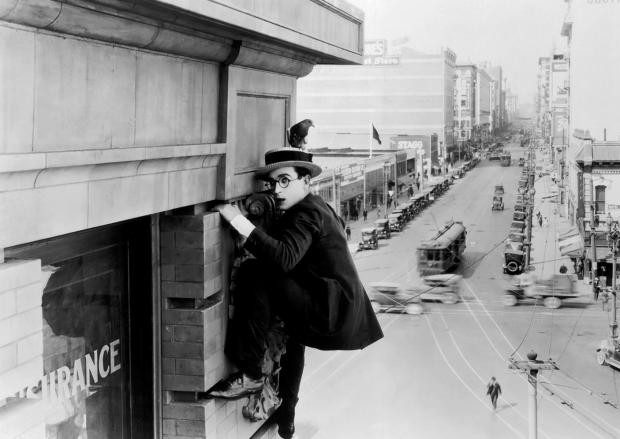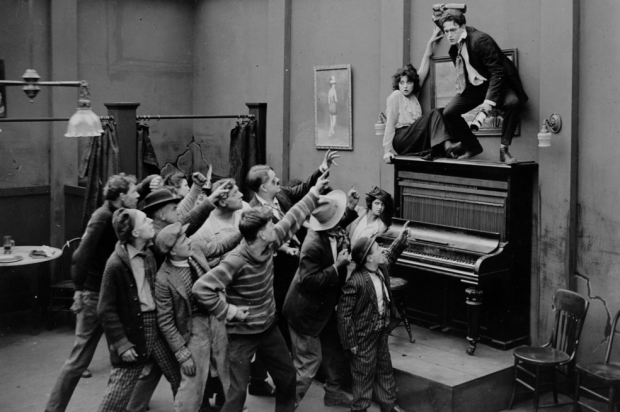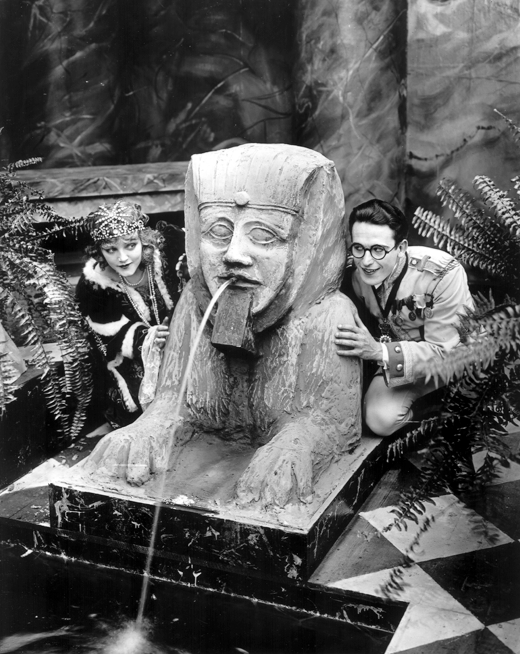
When discussing the “merit” of titles joining The Criterion Collection, it seems like a no-brainer seeing Fred Newmeyer and Sam Taylor’s Safety Last! as the latest masterpiece to receive a spine number. The Harold Lloyd-starring comedy remains an endlessly delightful romp, to this day as inventive and relatable as it must have felt in 1923 — however, while Safety Last! has had no shortage of a reputation over the years (not to mention easy accessibility), many of Lloyd’s silent shorts have been unavailable in any format. Thankfully, Criterion has given us three new restorations of rarely seen works, the lot of which give more insight into the comic sensibilities of the silent clown. Here’s a short take on each of them:
Take A Chance (Alfred J. Goulding, 1918)
Slapstick in short form only requires the most minor of plots, and the most reliable plot to set any film into motion is “the girl.” The object of Lloyd’s affectations here is his long-time partner Bebe Daniels, who might be more than he can handle. When the two find a seesaw, he does everything in his power to hold on to dear life as she merrily (and violently) swings along without noticing. Chaplin had his selflessness; Keaton was a stone face; Lloyd’s iconic “Glasses Character” is a mischievous little man. While hiding in the back of a car when Daniels goes off with her boyfriend, he sneaks kisses onto her and slaps onto him. Halfway through this one-reeler, the girl is abandoned for a chase as Lloyd is mistaken for an escape convinced and takes to foot, bike, and barrel to escape the Keystone-esque cops. Flailing his legs in the direction of any cop who might be in his path, the final chase shows the clown in an absurdist, Kafkaesque situation, with a final punch line that leaves his fate sealed with a twisted laugh.

Young Mr. Jazz (Hal Roach, 1919)
Navigating a periscope through the sand, Lloyd will do anything to get Bebe Daniels after spying her with her father at the beach — so the two elope into a dangerous speakeasy for a night full of “dancing, drinking, and undesirables.” The two are woefully unprepared for this land of alcohol and gangsters: after they shortly arrive, both fail to notice the half dozen hands that quickly grab every possession they own. They’re trapped in a quagmire between a bartender demanding they pay for their drinks before they indulge them (to the dance floor!), as well as the angry father hunting them down (until he finds himself caught up in his own naughty conquest!). The film’s main setting reflects a Vaudevillian attitude toward narrative, even taking a break from the action to watch the Apple Sisters perform a dance. But it all comes rushing back as Lloyd bursts into action to save his future father-in-law from the gangsters, his long legs as dangerous as any gun.
His Royal Slyness (Hal Roach, 1920)

It takes you a second to realize there’s no camera trick when two Lloyds show up on screen in His Royal Slyness. Instead, it’s Harold as the dopey American boy and his brother, Gaylord, as the Prince of Razzamataz. The prince is more interested in the vamp who’s accompanied his journey to America, and, needing someone to take his place for a possible wedding to the Princess of Themosa, American Lloyd gladly switches places. Lloyd’s American “manners” make him a walking parody amongst the high European royalty; as he walks the castle, every female servant gets a pass, if not two. But he’s also a good guy at heart: when he runs into the princess in disguise, he gladly helps her stop a peasant from beating a horse (in a way most painful to the peasant). She’s played by Mildred Davis, her first role of many with Lloyd (including that of his real-life wife), and who brings a snappy edge to her flirtations. When she allows him to leave a kiss on her hand, he goes right in for the big smooch. Quite plotted at the beginning and the end (this one goes for two reels), His Royal Slyness ends with a revolution and Lloyd leading the charge — but danger is rarely a factor, unless one is afraid of falling into the royal pool.
Safety Last!, along with the three aforementioned short films, are now available on The Criterion Collection.

